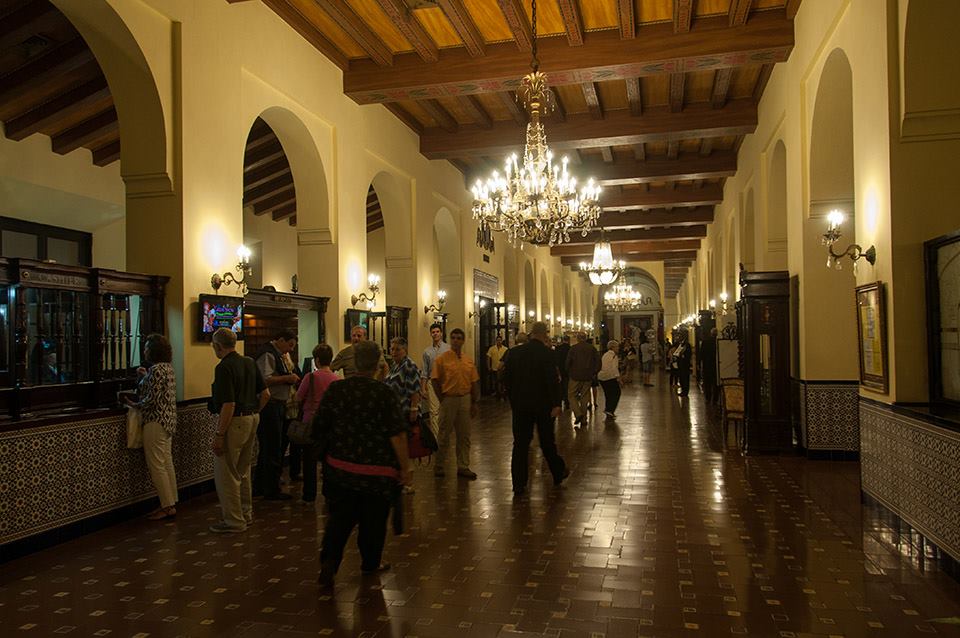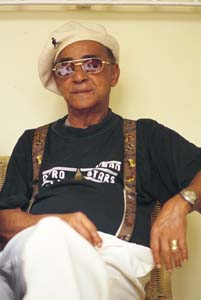‘THE MARAÑÓN SQUEEZE (Aprieta) THE MOUTH’ .. MANUEL “Puntillita” LICEA.
There were moments when the Cuban musical creation went eventful original creators and interpreters who shelling sones, guarachas, boleros or chachachás, started from the Creole grace of daily living or sublime moments of love or heartbreak. They ran the 40s.
It was then that Manuel Licea Lamouth, who with the nickname “Puntillita” sounded on the radio in my youth with a song called “Cashew” forever inscribed in the national musical anthology.
…si el marañón aprieta la boca,
has tú, en el baile, una imitación..
The picaresque theme touched down in lexicology of our adolescence to give meaning to the term “squeeze” with form, function and meaning.
Licea were born in the province of Oriente, Holguin -Yareyal today, January 4, 1921 and had begun his career as part of the band The Boys Scouts. And in Camagüey, in the 40s, was part of the orchestra Hermanos Licea.
It was difficult age 40-50 years, that glittered in the national pentagram many voices gauge, which had a long list like pattern and beginning with Miguel Matamoros and his trio and ended with Benny Moré, but still had references in Carlos Pack, in the Maisí or Ninón Modéjar quartet, with his orchestra America, to cite just a few examples of mixed fortunes over which should be based on any analysis.
.. In Camagüey Manuel Licea come as a singer in the Escorcia orchestra, directed by Jorge González Allué. Then he was a percussionist of the Orchestra Temptation. In 1945 he moved to Havana to join the orchestra of the famous trumpet Julio Cueva, with insuring, acquire the nickname he became better known, thanks to the song “Son of Puntillita”. He alternated those days with performances in the Orchestra of the Castro brothers and the whole Casino. In 1951 he started as a soloist, appearing on Radio Cadena Habana and other radio stations.
In Mexico he performed at El Patio, and La Gloria Matancera was made in the Antillean cabaret.
… When I was chiquitico and mamey
… And I sucked mango seed …
For those who in the early 60-and 20 years follows- we entered adolescence or already in the juvenile stage, and we were more interested in the Anglo rock or we accepted as good what then was called prodigious decade, the ‘ voices “of Cuban music was at that time the unique but not the only-Tito Gómez, José Tejedor or Barbarito Ten; were times shining combinations Planas-Macías in Rumbabana orchestra or sparking the grace of Ñico “Saquito” Faustino Oramas, El Guayabero.
And among Pacho Alonso and Roberto Faz there was little room to enter the fray. It was hard to get up and … maintained.
The “rescue” Puntillita was possible thanks to Buenavista Social Club project -under mercantilist approach “paved with good intentions” (or vice versa … everyone will have their arguments) – grouping bringing together several old musicians and performers to which the new artistic trends had been postponed. They recorded a self-titled album, which obtained a Grammy in 1998.
Buenavista Social Club presented those veterans in action considered “historical” in the prestigious Carnegie Hall in New York than would a second disc: Buena Vista Social Club live at Carnegie Hall.
In late 1999, after a tour of Japan with other members of the Afro-Cuban All Stars, Manuel Licea (Puntillita) group suffer a crisis of diabetes. Fatigued by age and state of health dies of pneumonia in Havana on December 4, 2000.
Jiribilla / Jorge Sariol, Havana / Internetphotos / TheCubanHistory.com
The Cuban History, Hollywood.
Arnoldo Varona, Editor.
CUBA PHOTOS. Dentro del Hotel Nacional.

‘EL MARAÑÓN APRIETA LA BOCA’.. MANUEL “PUNTILLITA” LICEA.
Eran momentos en que la creación musical cubana andaban pletórica de creadores e intérpretes originales, que para desgranar sones, guarachas, boleros o chachachás, partían de la gracia criolla, de la vivencia cotidiana o de sublimes momentos de amor o desengaños. Corrian los años 40s.
Era entonces cuando Manuel Licea Lamouth, quien con el sobrenombre de “Puntillita”, sonaba en la radio de mi mocedad con un tema llamado “El marañón”, para siempre inscrito en el florilegio musical nacional.
…si el marañón aprieta la boca,
has tú, en el baile, una imitación..
La picaresca del tema tomaba tierra en la lexicología de nuestra adolescencia para darle sentido al término “apretar” con forma, función y significado.
Licea habían nacido en la entonces provincia de Oriente, hoy Holguín ―Yareyal, 4 de enero de 1921― y había iniciado su carrera artística como parte de la banda Los Boys Scouts. Y en Camagüey, en la década del 40, integraba la orquesta Hermanos Licea.
Era época difícil los años 40-50, porque rutilaban en el pentagrama nacional muchas voces de calibre, que tenían un largo listado como patrón y que empezaba con Miguel Matamoros y su trío y terminaba con Benny Moré, pero igual tenía referentes en Carlos Embale, en el cuarteto Maisí o Ninón Modéjar, con su orquesta América, por solo citar algunos ejemplos de diversa suerte, sobre los cuales habría que partir en cualquier análisis.
.. En Camagüey Manuel Licea entraría como cantante en la orquesta Escorcia, dirigida por Jorge González Allué. Después fue percusionista de la Orquesta Tentación. En 1945 se trasladó para La Habana, para sumarse a la orquesta del famoso trompeta Julio Cueva, con la que aseguran, adquiriría el sobrenombre que lo hizo más conocido, gracias a la canción “Son de la puntillita”. Alternó por aquellos tiempos con actuaciones en la Orquesta de los Hermanos Castro y el conjunto Casino. En 1951 se inició como solista, presentándose en Radio Cadena Habana y otras radioemisoras.
En México actuó en El Patio, y con La Gloria Matancera se presentó en el cabaret Antillano.
…Cuando yo era chiquitico y del mamey
…y que del mango me chupaba la semilla…
Para los que a principios de los 60 ―y en los 20 años siguientes― entrabamos en la adolescencia o ya en la etapa juvenil, y estábamos más interesados en el rock anglosajón o aceptábamos como buena lo que luego se llamó la década prodigiosa, las «voces» de la música cubana eran en aquel tiempo los inigualables —pero no los únicos— Tito Gómez, José Tejedor o Barbarito Diez; eran tiempos en que brillaban las combinaciones de Planas-Macías en la orquesta Rumbabana o chispeaba la gracia de Ñico “Saquito” y Faustino Oramas, El Guayabero.
Y entre Pacho Alonso y Roberto Faz había poco espacio para entrar en la liza. Era difícil incorporarse y… mantenerse.
El “rescate” de Puntillita fue posible gracias al proyecto Buenavista Social Club —bajo criterio mercantilista “lleno de buenas intenciones” (o al revés…cada quien tendrá sus argumentos) —, agrupación que reuniera a varios viejos instrumentistas e intérpretes a los que las nuevas tendencias artísticas habían postergado. Todos ellos grabaron un disco homónimo, que obtuviera un Grammy en 1998.
Buenavista Social Club presentó aquellos veteranos en una actuación considerada “histórica”, en el prestigioso Carnegie Hall de Nueva York del que saldría un segundo disco: Buena Vista Social Club live at Carnegie Hall.
A finales de 1999, luego de una gira a Japón con otros miembros del grupo Afro-Cuban All Stars, Manuel Licea (Puntillita) sufriría una crisis de diabetes. Fatigado por la edad y su estado de salud muere de neumonía en La Habana, el 4 de diciembre de 2000.
Jiribilla/Jorge Sariol, La Habana/Internetphotos/TheCubanHistory.com
The Cuban History, Hollywood.
Arnoldo Varona, Editor.





